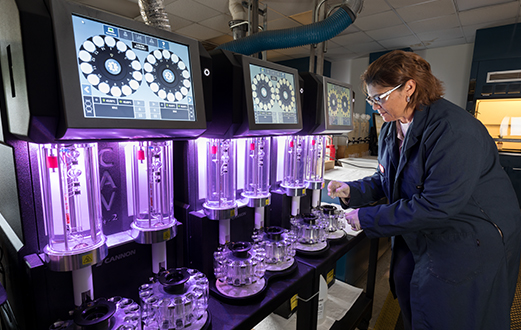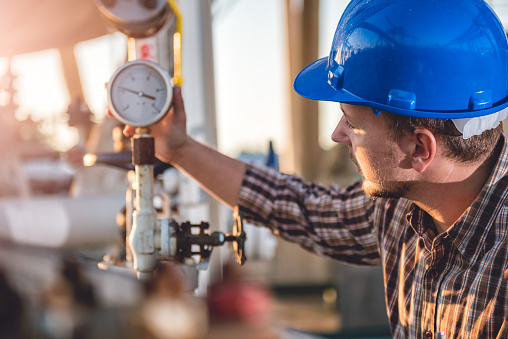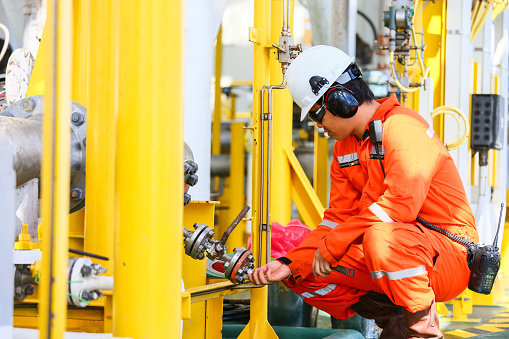Your Questions About Natural Gas, Answered
Natural gas is powering our modern way of life and helping to cut CO2 emissions. Here’s what this energy revolution is all about.
Learn MoreNatural gas is powering our modern way of life and helping to cut CO2 emissions. Here’s what this energy revolution is all about.
Learn MoreNatural gas and oil companies partnering with other industries to reduce greenhouse gas emissions

April 28, 2021
Tackling big problems requires collaboration.
As part of an effort to cut greenhouse gas emissions, natural gas and oil companies are teaming up with outside partners to deploy new technologies and launch innovative new programs. We’re working towards shared international goals to address the risks of climate change and to accelerate the actions necessary for a lower-carbon future.
Here are just five collaborations working toward a more sustainable future:
1. Working with Microsoft on Technological Solutions
Microsoft has joined forces with energy companies to reduce greenhouse gas emissions and launch a new carbon capture project.

The technology giant, Chevron Corporation, Schlumberger New Energy and Clean Energy Systems, a California-based energy provider, recently announced plans to develop a ground-breaking bioenergy with carbon capture and sequestration project in Mendota, California.
The plant will convert agricultural waste biomass, such as almond trees, into renewable energy resources. Almost 99% of the carbon dioxide created during the energy manufacturing process will be captured and stored deep underground.
Additionally, Microsoft has a strategic alliance with Shell that involves working together on digital technologies to help customers, suppliers and other businesses manage and reduce their own carbon footprint. Shell is also supplying Microsoft with low-carbon energy products and services, including renewable energy, to help Microsoft meet its commitment to having a 100% supply of renewable electricity by 2025. In addition, the two companies are leveraging existing expertise and technologies to create and implement new artificial intelligence solutions that will accelerate Shell’s digital transformation.
2. Partnering to Power Carbon-Neutrality
bp’s lubricants business, Castrol, helped Roush Fenway Racing become the first carbon-neutral NASCAR race team this year by supporting its carbon reduction and offset programs, on and off the track. The partnership is designed to help Roush track, quantify and reduce its greenhouse gas emissions and offset the balance through high-quality carbon offsets.

This year, Castrol also launched a partnership with the NFL’s Los Angeles Rams to help the team reduce its environmental impact through sustainability initiatives, such as offsetting carbon emission from air travel to away games during the 2021 season.
Previously, Castrol was central to a partnership between bp and Ford that focused on making the internal combustion engine more efficient.
While Ford’s engineers worked to develop its new Ecoboost engine, bp created a specially-formulated engine oil – called Castrol Magnatec Professional ‘E’ – to support it. The result of their collaboration is a line of far more fuel-efficient vehicles. The Ecoboost technology is now used in the F150, one of the top-selling trucks in the world.
“These relationships are very useful. They help us to understand the nature of each other’s challenges, which helps us to plan for the future,” Ford’s Andreas Shamel said.
3. Collaborating to Cut Natural Gas Flaring
The Oil and Gas Climate Initiative recently launched a collaboration with the Payne Institute for Public Policy (PIPP) at Colorado School of Mines, to develop a transparent web platform to support real-time mapping and tracking of global natural gas flaring data. The program was developed under the umbrella of the World Bank’s Global Gas Flaring Reduction Partnership.
Occasionally, while producing natural gas, energy companies perform a controlled combustion of the fuel for operational, safety, or economic reasons. The practice, known as flaring, leads to the emissions of carbon dioxide.

The new web platform will give companies more data and information, so they can better tackle the problem.
“Reducing gas flaring is a priority for OGCI and its members, and OGCI is delighted to be partnering with the Payne Institute and the World Bank to contribute data and knowledge, and progress this important initiative,” said Vanessa Ryan, head of OGCI’s Role of Natural Gas workstream and manager of Carbon Reduction for Chevron. “Increased data transparency will enable governments and our industry to make more informed and precise decisions to reducing flaring, which is critical to tackling climate change.”
4. Teaming Up to Eliminate Methane Leaks
At Colorado State University’s Methane Emissions Technology Evaluation Center (METEC), academics partner with energy company employees, environmental groups and government regulators to research ways to cut methane leaks, which can occur during natural gas production.

METEC simulates the real-world conditions at production sites, complete with well pads, compressor stations, and the pipes between them. At the site, team members explore the use of new technologies, such as drones and infrared cameras, capable identifying methane leaks. From there, natural gas companies can quickly repair the leak, preventing it from becoming a big problem.
“Natural gas has positive advantages as an energy source. We know how to keep it clean. We know how to transport it efficiently and safely. And it’s just going to become more important in the coming years. We want to make it as environmentally friendly as possible,” Dan Zimmerle, a senior research associate in the university’s Energy Institute, said.
5. Cooperating to Reduce Methane Emissions

More than 80 of the world’s leading natural gas and oil companies are collaborating to reduce methane emissions by installing new technologies and sharing best practices through a coalition known as The Environmental Partnership.
In 2019 alone, the Environmental Partnership conducted more than 116 million component inspections and installed nearly 3,000 zero-emission pneumatic controllers at production sites. Their work has helped to bring the leak rate down to 0.08%.
The Environmental Partnership’s flare management program – launched in 2020 – allows participating companies to share proven techniques for reducing emissions and analyzing data. By convening experts from the nation’s top energy producers, the industry can better understand, detect and mitigate emissions from flaring.
What is the single biggest reason for the reduction of carbon dioxide emissions in the United States?
Correct! The U.S. Energy Information Administration reported that from 2005-2019, 65% of the decline in CO2 emissions in the electric power sector was attributable to switching from coal-fired to natural gas-fired electricity generation. Learn more about the power of natural gas.
Good try! The U.S. Energy Information Administration reported that from 2005-2019, 65% of the decline in CO2 emissions in the electric power sector was attributable to the switching from coal-fired to natural gas-fired electricity generation. Learn more.
More From API
Read on for in-depth articles about how we’re securing America’s energy future, our efforts to combat climate change, and more.
New innovations make it possible to produce more energy with fewer emissions Combatting emissions of methane, a potent greenhouse gas, […]
Learn MoreBetween now and 2050, according to the Energy Information Administration, the American demand for electricity will increase 1% each year. To […]
Learn MoreWe’re taking five key steps to reduce greenhouse gas emissions
Learn MoreWe use cookies to offer you a better browsing experience, analyze site traffic, personalize content, and serve targeted advertisements. If you continue to use this site, you consent to the use of cookies. Read more about our Privacy Policy and Terms and Conditions.
accept